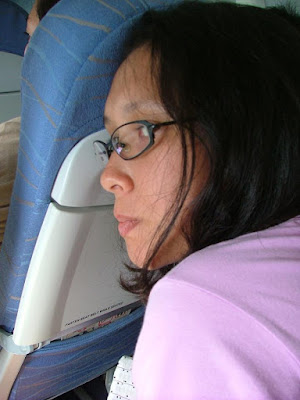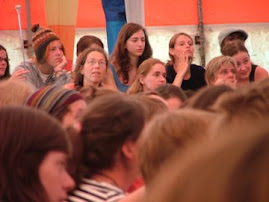Ma and pa tried to give my brother and me a real Filipino childhood – starting with giving us Filipino names – Bayani and Maya – and then relocating the family to San Jose, Antique, where we spoke Cebuano, Kiniray-a, Ilonggo and Tagalog all at the same time. We slept on a banig, played sungka, ins-ins, maro-maro, patintero on the unpaved street in front of our house and sat in front of our neighbor’s television set watching Bong Revilla, Anjanette Abajari and Rene Requistas with the rest of our neighborhood pals. Every afternoon, with towels draped over our shoulders, we’d walk to the sea and swim to our hearts content pausing only to count down the beautiful setting of the sun.
Our Filipino upbringing involved having to drink kalamansi juice and eat saging every day. We were encouraged to read books about Jose Rizal, Andres Bonifacio, Gabriela Silang, Juan Luna and other Filipino heroes that included real and fictional Muslim and lumad princes, princesses and datus. My parents’ efforts paid off as Bayani and I became more and more Filipino and less Belgian. That meant patronizing Jollibee, not McDonalds; sepak takraw, not soccer; rattan and bamboo bags, not plastic or leather bags; bracelets and earrings made of seeds, stones and wood, not gold; the list goes on.
So last week, when my friend Hannah Saavedra Straver offered me a free spa treatment fit for a Sulu princess, I couldn’t resist something as truly Filipino as that. I had passed her spa, Astanah The Royal House of Wellness several times on my way downtown and wondered whether it really had anything new to offer. As a self-proclaimed spa connoisseur, I’ve sampled Thai massage, Swedish massage, hot stone massage, foot massage, acupuncture, acupressure (hilot), sauna, steam baths, facial, manicure, pedicure, and so on, all in the pursuit of finding the most relaxing and satisfying body pampering treatment. So yeah, Astanah, bring it on.
That Sunday I took an especially long bath and with some Veet, removed unwanted hairs on my underarms and legs so as not to injure the hands of Astanah’s masseuse when she rubs me down. I arrived promptly at 5 o’clock and waited in the lounge area pleasantly surprised by the wonderful ambiance of Astanah. The soft glow from wall lamps decorated with the typical curlicues of the Sulu Sultanate houses of long ago; the Tausug patterns on the ceiling, cloths, pillows; and the framed wall pictures of a real pretty Muslim princess add to the exotic Sulu feel of Astanah. Most importantly, the place smells fresh, the aircon isn’t freezing over, the staff speak respectfully in whispers, and the soft sound of waves crashing are perfect mood lifters. There is even a buffet table where guests can sample for free the delicious Tausug sweets and brewed coffee from Basilan!
Hannah proudly gave me the grand tour: The rooms to the left are for men. The rooms on the right are for women. Separating them is an open area with lounge chairs for those wanting hair, face, hand, and feet pampering. There’s a more spacious VIP room and a couples room housing two mobile thermal saunas. Small but extremely hot I later discovered. Astanah has even a well with warm water to replicate the bathing experience of Tausug women from the royal family.
Astanah’s uses coconut shells instead of porcelain, glass or plastic containers, and coconut bark instead of the usual metal file. Floating stones and banana leaves. Oatmeal, brown sugar and kalamansi. Olive oil, coconut oil and lipah (a combination of turmeric and leaves and roots of plants from Sulu). It’s true; there’s not one artificial, chemical concoction in Astanah. (Oatmeal is obviously an innovation but still natural.)
Co-owned by childhood friends Hannah Saavedra Straver and Sitti Djalia Turabin-Hataman, Astanah The Royal House of Wellness is located across Matina Town Square in the same building as Dimsum Diner and Coffee for Peace. Astanah is a Tausug word referring to the Royal House of the Sultan of Sulu and I was delighted to learn that Sitti is a descendant.
Two years ago I had the luck to fly to Jolo, Sulu and visit the Sulu Museum where I was spellbound by the displays on the Sulu Sultanate. I read one story after another recounting how the people of Sulu (Tausugs) were so fiercely protective of their Islamic roots that even when the rest of the islands in the Philippine archipelago succumbed to the Spanish colonizers and later the Americans, the Sulu Sultanate continued to resist. Artifacts, maps, pictures and drawings showed the Sulu Sultanate fighting to retain the Bangsamoro political system and government influence over their vast territories covering Tawi-Tawi, Basilan, Sulu, the Mindanao mainland, Panay, and Palawan. They fought to stay free and self-sufficient and continue engaging in international trade (barter) with the neighboring kingdoms of Brunei, Indonesia and Malaysia. Disappointed with my history teachers for glossing over this important piece of Philippine history, I nevertheless felt lucky to be in Jolo, Sulu where the powerful Sulu Sultanate once thrived.
For Hannah and Sitti, putting up Astanah The Royal House of Wellness is a way of remembering and paying tribute to their ancestors in Sulu and share a bit of Tausug culture with the rest of the world. Sitti, I’m told, grew up watching her Tausug grandmother and aunts use their powerful non-invasive all natural beauty treatments. Hannah explains, “When you go to Bali, you’re offered unique Balinese body pampering; there’s even Thai massage, Swedish massage, but nothing truly Filipino!” That got me all pumped up and ready to strip and be Astanah-ized. Hannah left and my uniquely Tausug beauty ritual began.
Took a 5-minute shower, 15-minute sauna, then lay down in the VIP room draped in nothing but a towel. I was relieved. Total nudity, even with the lights off, is not my style especially since my masseuse, Shyne, was dressed like a Singaporean airline flight attendant. She showed me the oatmeal and brown sugar concoction placed in a coconut shell and proceeded to methodically rub it all over me. Masakit na masarap. The intense sauna I had taken earlier helped in making the dead skin fall off easily. Shyne used a brush to remove the chunks and spread on a skin moisturizer made of coconut oil and lipah. I had to soak it up for 15 minutes and then wash it off at the well. My skin looked and felt ravishing.
Next up was Astanah massage, Astanah aromatherapy, Astanah volcanic stone massage, volcanic stone massage only, or Astanah head and shoulder massage. I chose Astanah massage with olive oil. Shyne gave me a beautiful violet malong to wear and I dozed off as she expertly used pressure and touch following the direction of the blood vessels and stroked and kneaded my muscles. I felt rejuvenated, not heavy or sluggish like I usually do after a massage. (I’m definitely coming back!)
Back in the reclining chair with my clothes on this time, Aileen cleaned my face and Mhaya cleaned and painted tiny hearts and flowers on my toenails and fingernails. Interesting was the facial cleanser consisting of grated young coconut and lemon. This was then removed with a sponge and replaced with the lipah mud pack, a mixture of soaked rice, turmeric and depending on the desired effect, may contain either coffee beans, bark of lansones or durian, papaya, leaves and roots of other plants and herbs found in the forests of Sulu. All are sun-dried, mixed, grinded and sifted by some 30 women from Sulu who have been organized by Sitti’s aunt, Princess Carol for this purpose.
It was past 10 o’clock when I finally left Astanah happy with the Tausug beauty treatment that’s so soothing because it’s non-invasive, non-chemical, all natural (I can’t emphasize this more), and helps the women of Sulu earn a living. Refreshing to have something like this in Davao City of all places. Now if only somebody would also start a vegetarian, pesticide-free Filipino coffee-bar-restaurant, my enchanted Filipino life would be perfect indeed.
Wednesday, February 3, 2010
A Taste of Astanah The Royal House of Wellness
Posted by
MayaFlaminda
at
10:59 AM PERMALINK
![]()
Subscribe to:
Post Comments (Atom)


























4 comments:
tagpila didto May? pagbasa nako masimhutan nako ang coconut oil. hehehe.
-al
tama diay! mas Pinoy pa mo nako Maya bisan diri nako Pinas tibuok nako kinabuhi. hehehe. maayo jud sila na parents! labeyt!
-al
Al, here are some of Astanah’s popular treatments:
Sukay iban lubih – Traditional Tausug hair care that manually cleanses each hair strand and scalp, removing dirt and dandruff using a dunggot (bamboo stick with rounded edge) followed by the application of warm coconut milk with gugo, aloe vera and calamansi. [Prices vary from P300 to P450 and P600 depending on hair length.]
Passal – Traditional Tausug foot and/or hand and nail treatment for making them soft and smooth using a scrub of ground rice, turmeric, and papaya tops and capped with a banana leaf wrap. [Passal is actually a ritual in a Tausug royal wedding, performed by the groom’s kin as a homage to the bride. Prices range from P150 to P300.]
Lipah or Burak – Traditional Tausug facial treatment consisting of soaked rice, turmeric and depending on the desired effect, may contain either coffee beans, bark of lansones or durian, papaya, leaves and roots of other plants and herbs found in the forests of Sulu. All are sun-dried, mixed, grinded and sifted. The four types of facial treatments:
Lipah Pagpa Lanuh – to cleanse and remove impurities and toxins as well as pimples
and acne. It prevents and heals skin diseases. [Price: P300.]
Lipah Pagpa Hinat – to minimize wrinkles, fine lines and sagging skin resulting to a more lifted and firmer look. [Price: P250.]
Lipah Pa ig Limpa – to reduce facial scars caused by pimples, acne and wounds and as a result, minimizes the unsightly look of open pores. [Price: P250.]
Lipah Pagpa Sahaya – to create smooth and glowing skin that’s firmer, younger looking and clearer. [Price: P250.]
Lipah Baran – Consisting of the same components as the Lipah for facial treatments, this specially formulated body scrub contains additional papaya tops, brown sugar, calamansi and oatmeal for cleaner, smoother and whiter skin. Followed by a coconut-based moisturizing treatment to maintain the skin’s suppleness and elasticity. [Body scrub: P600 With massage: P800.]
Maya dear...thanks so much. It was fab to have you and even more fab is your write up!
Post a Comment